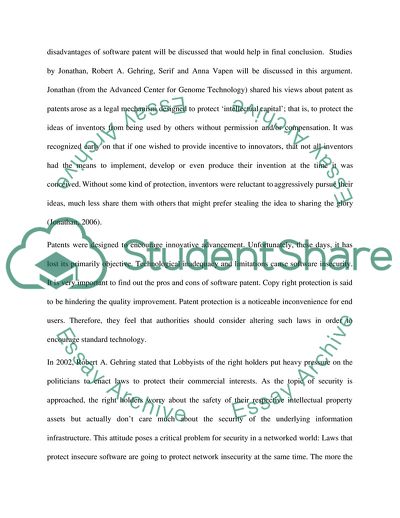Cite this document
(If the Software Patent Is Bad Coursework Example | Topics and Well Written Essays - 2250 words - 2, n.d.)
If the Software Patent Is Bad Coursework Example | Topics and Well Written Essays - 2250 words - 2. https://studentshare.org/information-technology/1728567-computer-assignment
If the Software Patent Is Bad Coursework Example | Topics and Well Written Essays - 2250 words - 2. https://studentshare.org/information-technology/1728567-computer-assignment
(If the Software Patent Is Bad Coursework Example | Topics and Well Written Essays - 2250 Words - 2)
If the Software Patent Is Bad Coursework Example | Topics and Well Written Essays - 2250 Words - 2. https://studentshare.org/information-technology/1728567-computer-assignment.
If the Software Patent Is Bad Coursework Example | Topics and Well Written Essays - 2250 Words - 2. https://studentshare.org/information-technology/1728567-computer-assignment.
“If the Software Patent Is Bad Coursework Example | Topics and Well Written Essays - 2250 Words - 2”. https://studentshare.org/information-technology/1728567-computer-assignment.


